HOME >> PHOTOS
Local handmade lantern market getting popular ahead of Myanmar's lighting festival
Source:Xinhua Published: 2019/10/10 12:32:08
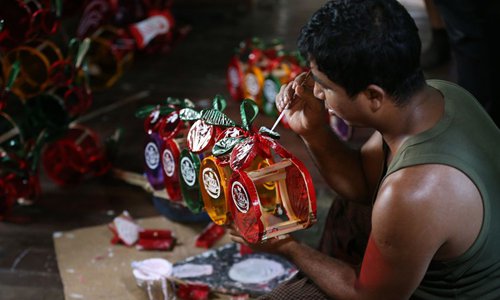
A man paints toy lanterns at a workshop in Yangon, Myanmar, Oct. 3, 2019. (Photo by U Aung/Xinhua)
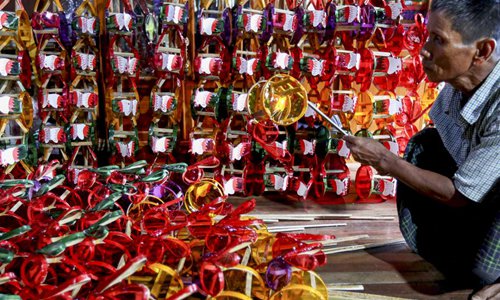
A worker arranges toy lanterns at a workshop in Yangon, Myanmar, Oct. 3, 2019. (Photo by U Aung/Xinhua)
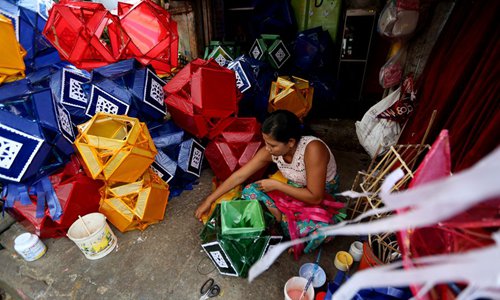
A woman makes lanterns at a workshop in Yangon, Myanmar, Oct. 4, 2019. (Photo by U Aung/Xinhua)
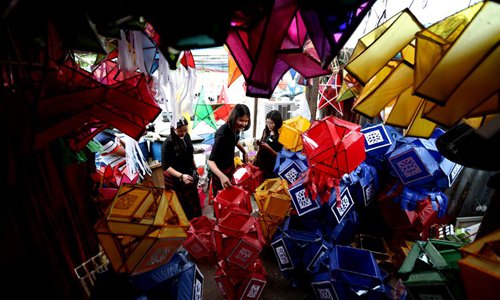
Customers select lanterns at a workshop in Yangon, Myanmar, Oct. 4, 2019. (Photo by U Aung/Xinhua)
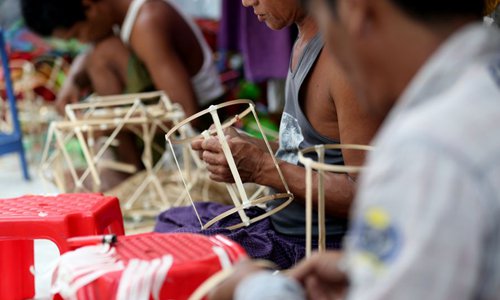
Workers curve lantern shapes at a workshop in Yangon, Myanmar, Oct. 4, 2019. (Photo by U Aung/Xinhua)
Handmade lanterns are earning high demand in the local market ahead of the upcoming Myanmar's traditional Thadingyut Lighting Festival which will fall on Oct. 13.
Lanterns, from hanging ones for house decoration to small toy lantern carts for children to play with, have been highly consumed by customers of all ages since days before the festival.
"Demand of local lanterns made a comeback since two years ago, after the local lanterns market went frozen when foreign-imported ones took a place in the market. Later these days, I have witnessed Myanmar's traditional artwork or handcrafted ones become well beloved by the people," Win Myint, a traditional lantern maker, told Xinhua.
"Normally, 15,000 handmade lanterns are sold out every year. So far, we have sold more than 8,000 handmade lanterns -- both hanging ones and toy lanterns this year," he said.
Running as the second generation of a family-run business aged over 40 years, Win Myint said, "Due to the small numbers of family members, we could only produce around seven designs for toy lanterns and our neighbours help us in making them too. We get orders not only from street vendors but also from companies which ask us to stamp their company logos on the lanterns".
Using bamboo as the main raw material, Myanmar's traditional handmade lanterns come in different types and designs. Basically, bamboos are trimmed and molded into selected shapes.
Along with the hanging lanterns, toy lanterns play as a market booster, targeting children. Toy lanterns are shaped into rabbit, rooster, fish, peacock, airplanes and others, and sticked with color papers.
Most of the traditional makers start their operations about three months before the festival season.
Some shops buy lanterns from the makers and upgrade them with decorative lights to attract more customers.
"Rabbit-shaped toy lanterns are the best sellers. When children see me, they would excitedly greet us while their parents wouldn't," said Aung Aung, a street vendor, laughing. "I understand the parents' feeling of worrying that their wallets will get slimmer. I once met a little boy, crying and begging his mother to buy all designs I was selling. At last, they bought two toy lanterns," he recalled his memorable event.
The Thadingyut lighting festival is traditionally celebrated for three days with the second day as the full moon day which falls on the 15th day of the seventh month according to Myanmar's calendar year, marking the end of the rainy season.
Children are seen strolling down the street with toy lanterns, and paper lanterns are seen hanging at almost every house during the festival.
Also, pagodas, temples and monasteries are crowded with pilgrims who would light candles around the shrines.
As part of the festive tradition, Myanmar people go visit their parents, grandparents, teachers and elderly relatives to pay their respects.
The Thadingyut Lighting Festival is also celebrated with Buddha's Dhamma teachings to drive away the darkness of ignorance and become enlightened in accordance with their beliefs.
RELATED ARTICLES:
Posted in: WORLD